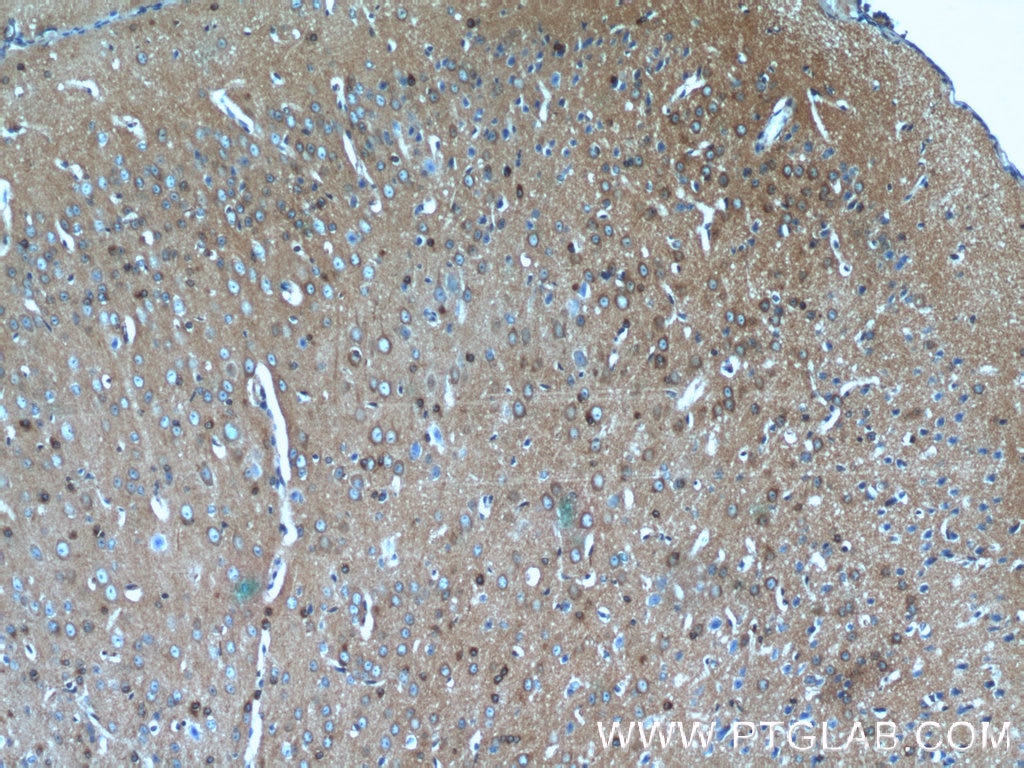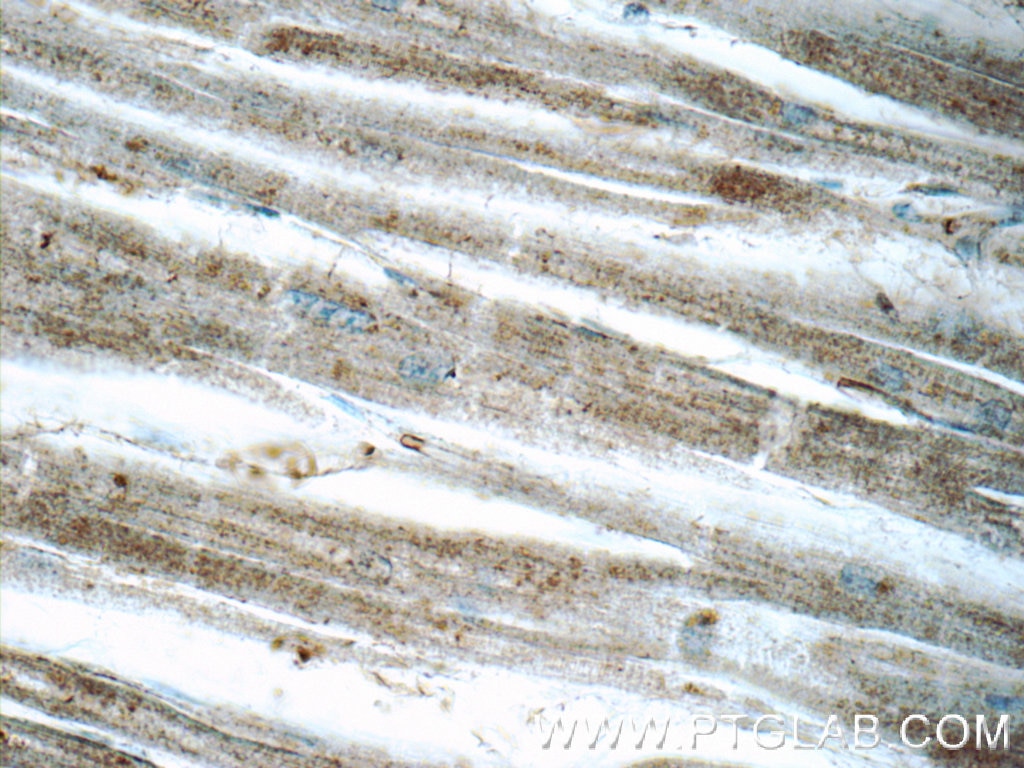- Featured Product
- KD/KO Validated
CRMP4 Polyklonaler Antikörper
CRMP4 Polyklonal Antikörper für WB, IHC, ELISA
Wirt / Isotyp
Kaninchen / IgG
Getestete Reaktivität
human, Maus, Ratte
Anwendung
WB, IF, IHC, ELISA
Konjugation
Unkonjugiert
Kat-Nr. : 13661-1-AP
Synonyme
Galerie der Validierungsdaten
Geprüfte Anwendungen
| Erfolgreiche Detektion in WB | Maushirngewebe, Rattenhirngewebe |
| Erfolgreiche Detektion in IHC | Maushirngewebe, humanes Herzgewebe Hinweis: Antigendemaskierung mit TE-Puffer pH 9,0 empfohlen. (*) Wahlweise kann die Antigendemaskierung auch mit Citratpuffer pH 6,0 erfolgen. |
Empfohlene Verdünnung
| Anwendung | Verdünnung |
|---|---|
| Western Blot (WB) | WB : 1:1000-1:5000 |
| Immunhistochemie (IHC) | IHC : 1:20-1:200 |
| It is recommended that this reagent should be titrated in each testing system to obtain optimal results. | |
| Sample-dependent, check data in validation data gallery | |
Veröffentlichte Anwendungen
| KD/KO | See 1 publications below |
| WB | See 4 publications below |
| IHC | See 2 publications below |
| IF | See 1 publications below |
Produktinformation
13661-1-AP bindet in WB, IF, IHC, ELISA CRMP4 und zeigt Reaktivität mit human, Maus, Ratten
| Getestete Reaktivität | human, Maus, Ratte |
| In Publikationen genannte Reaktivität | human, Maus, Ratte |
| Wirt / Isotyp | Kaninchen / IgG |
| Klonalität | Polyklonal |
| Typ | Antikörper |
| Immunogen | CRMP4 fusion protein Ag4557 |
| Vollständiger Name | dihydropyrimidinase-like 3 |
| Berechnetes Molekulargewicht | 570 aa, 62 kDa |
| Beobachtetes Molekulargewicht | 60-70 kDa |
| GenBank-Zugangsnummer | BC039006 |
| Gene symbol | CRMP4 |
| Gene ID (NCBI) | 1809 |
| Konjugation | Unkonjugiert |
| Form | Liquid |
| Reinigungsmethode | Antigen-Affinitätsreinigung |
| Lagerungspuffer | PBS mit 0.02% Natriumazid und 50% Glycerin pH 7.3. |
| Lagerungsbedingungen | Bei -20°C lagern. Nach dem Versand ein Jahr lang stabil Aliquotieren ist bei -20oC Lagerung nicht notwendig. 20ul Größen enthalten 0,1% BSA. |
Hintergrundinformationen
DPYSL3(Dihydropyrimidinase-related protein 3) is also named as CRMP4, DRP3, ULIP, ULIP1 and belongs to the hydantoinase/dihydropyrimidinase subfamily.DPYSL3 is a developmentally regulated protein, strongly expressed in early embryonic post-mitotic neural cells, reaching a peak of expression around the first post-natal week. In the adult brain, DPYSL3 is present mainly in regions that retain neurogenesis.DPYSL3 protein is also found in synaptic sites at the adult neuromuscular junction where it may be involved in the maintenance of neuronal stability(PMID: 16135096).It has 2 isoforms produced by alternative splicing.
Protokolle
| Produktspezifische Protokolle | |
|---|---|
| WB protocol for CRMP4 antibody 13661-1-AP | Protokoll herunterladen |
| IHC protocol for CRMP4 antibody 13661-1-AP | Protokoll herunterladen |
| Standard-Protokolle | |
|---|---|
| Klicken Sie hier, um unsere Standardprotokolle anzuzeigen |
Publikationen
| Species | Application | Title |
|---|---|---|
Mol Neurobiol Collapsin response mediator protein 5 (CRMP5) modulates susceptibility to chronic social defeat stress in mice. | ||
Neuropharmacology Collapsin response mediator protein 5 (CRMP5) causes social deficits and accelerates memory loss in an animal model of Alzheimer's disease. | ||
Cancer Biol Ther CRMP4a suppresses cell motility by sequestering RhoA activity in prostate cancer cells.
| ||
Int J Mol Sci Elevated Hippocampal CRMP5 Mediates Chronic Stress-Induced Cognitive Deficits by Disrupting Synaptic Plasticity, Hindering AMPAR Trafficking, and Triggering Cytokine Release | ||
Cell Rep Med Bone transport induces the release of factors with multi-tissue regenerative potential for diabetic wound healing in rats and patients |






